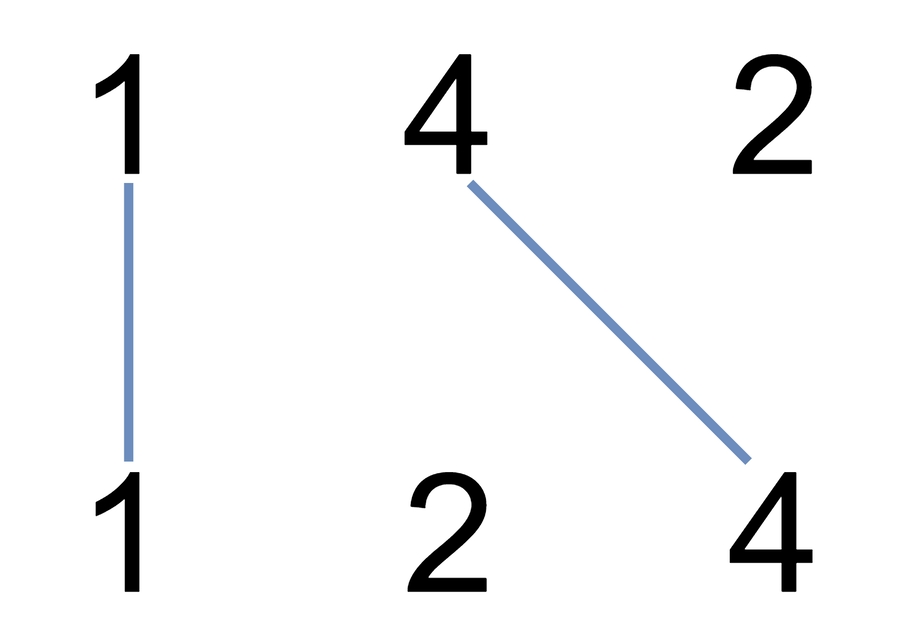1035. Uncrossed Lines
We write the integers of A and B (in the order they are given) on two separate horizontal lines.
Now, we may draw connecting lines: a straight line connecting two numbers A[i] and B[j] such that:
A[i] == B[j];The line we draw does not intersect any other connecting (non-horizontal) line.
Note that a connecting lines cannot intersect even at the endpoints: each number can only belong to one connecting line.
Return the maximum number of connecting lines we can draw in this way.
Example 1:
Input: A = [1,4,2], B = [1,2,4]
Output: 2
Explanation: We can draw 2 uncrossed lines as in the diagram.
We cannot draw 3 uncrossed lines, because the line from A[1]=4 to B[2]=4 will intersect the line from A[2]=2 to B[1]=2.Example 2:
Input: A = [2,5,1,2,5], B = [10,5,2,1,5,2]
Output: 3Example 3:
Input: A = [1,3,7,1,7,5], B = [1,9,2,5,1]
Output: 2Note:
1 <= A.length <= 5001 <= B.length <= 5001 <= A[i], B[i] <= 2000
// Dynamic Programming
int maxUncrossedLines(vector<int>& A, vector<int>& B) { // time: O(m * n); space: O(m * n)
int m = A.size(), n = B.size();
vector<vector<int> > LCS(m + 1, vector<int> (n + 1, 0));
for (int i = 1; i <= m; ++i) {
for (int j = 1; j <= n; ++j) {
if (A[i - 1] == B[j - 1])
LCS[i][j] = LCS[i - 1][j - 1] + 1;
else
LCS[i][j] = max(LCS[i - 1][j], LCS[i][j - 1]);
}
}
return LCS.back().back();
}// Space Optimized Dynamic Programming
int maxUncrossedLines(vector<int>& A, vector<int>& B) { // time: O(m * n); space: O(n)
int m = A.size(), n = B.size();
vector<int> LCS(n + 1, 0);
for (int i = 1; i <= m; ++i) {
int upper_left = LCS[0];
for (int j = 1; j <= n; ++j) {
int upper = LCS[j];
if (A[i - 1] == B[j - 1])
LCS[j] = upper_left + 1;
else
LCS[j] = max(upper, LCS[j - 1]);
upper_left = upper;
}
}
return LCS.back();
}Last updated
Was this helpful?